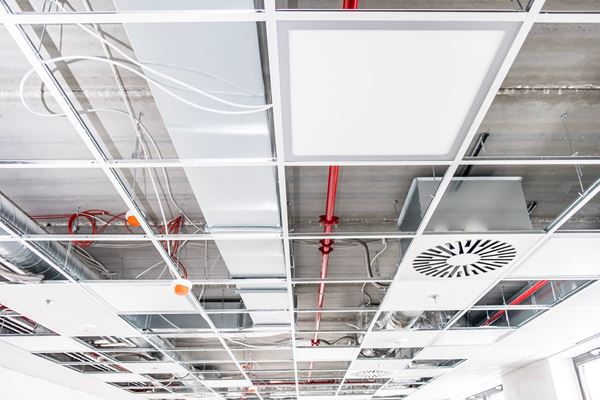Effective Strategies for Identifying and Repairing Common Masonry Issues

Masonry damage assessment is crucial for maintaining the structural integrity and aesthetic appeal of buildings. Both residential and commercial construction frequently utilise masonry structures, such as brick and concrete masonry units (CMUs).
Professionals, particularly insurance adjusters, need to be well-versed in identifying types of damage and best practices for assessment. This blog will explore common masonry damage types, their causes, and the importance of accurate assessment.
Despite their robustness, masonry structures are susceptible to environmental and mechanical forces. Moisture intrusion is a significant issue where water seeps into porous materials and expands upon freezing, leading to cracks and deterioration. This freeze-thaw cycle is prevalent in regions with fluctuating temperatures.
Additionally, moisture can cause efflorescence, a crystalline salt deposit indicating underlying water management issues. Effective flashing and drainage systems are vital for preventing long-term damage to masonry structures.
Identifying and Addressing Common Masonry Issues
Masonry damage can present itself in various forms, with cracking being the most prevalent and visible. Cracks arise from several factors, including thermal movement, structural deficiencies, and ground movement.
For example, vertical expansion cracks due to thermal movement indicate the need for expansion joints in large commercial buildings. Cracks above openings like windows and doors often stem from inadequate support or lentil bearing deficiencies. Horizontal cracks may point to tie failures in brick veneers, while subsidence and ground heave create distinct cracking patterns based on soil movement direction. Identifying these patterns is essential for diagnosing the root causes and determining suitable repair strategies.
Another significant type of masonry damage is mortar deterioration and bond failure. Mortar, the material binding masonry units, can deteriorate due to weathering, freeze-thaw cycles, and erosion, compromising the bond between masonry units and leading to structural instability. Assessing mortar condition involves examining erosion extent and identifying bond failure areas. Repairing mortar deterioration typically involves repointing, which renews the external part of mortar joints, restoring structural integrity and enhancing masonry appearance.
Moisture intrusion and efflorescence are also common issues in masonry structures. Moisture can penetrate masonry through cracks, porous materials, and inadequate sealing, causing mould growth, material degradation, and efflorescence—the white, powdery deposit on masonry surfaces from migrating soluble salts. Efflorescence often indicates excessive moisture within the masonry.
Addressing moisture intrusion requires identifying moisture sources, improving drainage, and applying appropriate sealants. Preventing efflorescence involves controlling moisture levels and using materials that minimise salt migration.
Key Steps in Assessing Masonry Damage
Accurate masonry damage assessment requires distinguishing between structural and non-structural damage. Structural damage impacts the building's load-bearing capacity and demands immediate repair to ensure safety. Non-structural damage, while not compromising stability, can still pose risks and affect aesthetics.
For instance, hairline cracks may not be structurally significant but can indicate underlying issues needing attention. Insurance adjusters must differentiate between these damage types to provide fair settlements and guide effective repair recommendations.
Load-bearing masonry walls are particularly susceptible to moisture-related damage. Unlike non-structural brick veneers, which drain water through weep holes and flashing, load-bearing walls lack an interior drainage system. Water penetrating these walls must evaporate naturally, and impermeable exterior materials can trap moisture inside, leading to deterioration and potential structural failure. Regular maintenance, such as repointing mortar joints and ensuring proper flashing, is essential to preserve masonry structures' integrity.
Mechanical forces, including vehicle impacts or vibrations from nearby construction, can significantly damage masonry structures. While masonry effectively distributes weight and withstands impacts, repeated or severe forces can cause cracks and structural issues. Foundation movement due to soil settlement or groundwater extraction can also lead to masonry walls cracking and shifting. Monitoring these forces and addressing signs of damage promptly is crucial to prevent further deterioration.
Visual inspections play a key role in maintaining masonry structures. Inspectors should look for damage signs like cracks, spalling, and efflorescence. Cracks wider than 1/4 inch, stair-step cracking, and bulging walls are red flags indicating potential structural issues. Moisture meters and thermal imaging tools help identify hidden moisture problems, while crack monitors track crack progression over time. Regular inspections and maintenance can catch issues early and prevent costly repairs.
Effective masonry damage assessment requires a comprehensive approach to understanding the types of damage, their causes, and the best practices for inspection and repair. Issues such as cracking, mortar deterioration, moisture intrusion, and efflorescence are prevalent challenges that professionals must address to ensure structural integrity. Accurate assessment plays a crucial role in preventing fraudulent claims, ensuring fair settlements, and guiding repair strategies.
Regular maintenance and monitoring are essential to manage common problems like moisture intrusion and mechanical forces that can compromise masonry structures. By adhering to industry standards and utilising appropriate tools, professionals and property owners can preserve the longevity, safety, and aesthetic appeal of masonry buildings, contributing to the resilience of the built environment.
Trust Envista Forensics for Masonry Damage Assessment Expertise
Masonry damage isn’t always straightforward. What appears as minor cracking or efflorescence can signal deeper structural issues.
Envista Forensics experts specialise in accurately identifying, assessing, and diagnosing common and complex masonry problems in both residential and commercial structures.
From mortar deterioration and moisture intrusion to structural cracking and load-bearing wall failures, our multidisciplinary team uses industry-best practices and advanced tools to deliver clear, defensible findings.
Whether you’re an insurance adjuster, contractor, or property owner, we provide the insight needed to guide fair claims resolution and ensure safe, long-lasting repairs.
Contact Envista today to consult with a building expert and protect the value, safety, and integrity of your masonry structures.
Our experts are ready to help.



